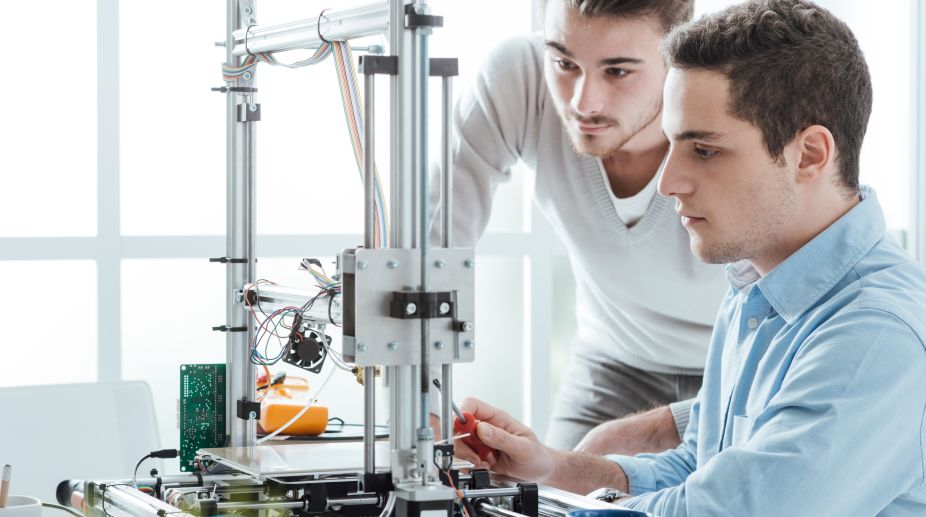Advanced engineering is at the dawn of a new and exciting era. Changing customer behaviours and demands are driving new business models — the manufacturing process must be faster, greener, and more responsive.
Conventional production of highly-engineered components is generally wasteful and energy intensive — in the aerospace sector, for example, typically 10-20 per cent of costly materials go to scrap. Even with strategies in place to recondition and recycle scrap, the energy use, CO2 emitted and financial costs associated are becoming ever more prohibitive and unacceptable.
Growing demand for resource efficiency and reduced waste, coupled with issues of material scarcity and the environmental impact of manufacturing and material production have become significant drivers of change. Therefore the accepted wisdom in traditional manufacturing processes that excess energy use and waste are inevitable is being challenged — what if 100 per cent of the starting material can be incorporated into the final product?
Powder-based manufacturing promises such a reality. Rapid developments in powder-based processes, coupled with innovations across materials science and manufacturing technologies, are offering great potential for new product forms with complex structures, enhanced performance and functionality.
Powder-based routes can generate components, materials and structures, which in many cases exhibit superior properties to those manufactured by traditional routes, at the same time delivering significant reductions in energy consumption and waste generation. Furthermore, many commercially important materials can only be produced from powders.
Technologies have emerged, which can significantly reduce processing time (spark plasma sintering for ceramic matrix composites), facilitate the manufacture of complex objects (turbine blades via additive manufacturing), and produce components with complex structural hierarchies (freeze casting for advanced batteries and bio-inspired composites).
Emerging powder-based manufacturing technologies include, freeze casting; inkjet printing; hot isostatic pressing; and laser, electron beam, and indirect additive manufacturing. These technologies have a clear potential to drive disruptive growth by deploying novel advanced ceramics, polymers, metals in aerospace, energy and automotive applications.
As developments in powder science transition into manufacturing technologies the benefits should include reduced material waste in comparison to subtractive methods; superior products with complex internal structures that add strength, reduce weight, increase functionality, and are easier to maintain; open-design products created by communities of end users; the ability to produce customised parts in small batches at low cost; quicker time to market due to faster design and prototyping cycles as well as the possible elimination of many traditional manufacturing steps such as transportation, tooling, and assembly; greater competition, creating a larger variety of products due to lowered barriers to entry and finally, smaller, less costly, and more agile supply chains, especially for low-volume or highly specialised components.
These innovative technologies are opening up new market opportunities across a diverse range of high value sectors such as aerospace, energy and automotive. However, there is a risk that developments in manufacturing technologies are outpacing our understanding of the underpinning process and materials science. Industry is lacking confidence, with uncertainty over in-process behaviour and concerns over in-service performance, resulting in these technologies not realising their full potential. A widening skills gap in manufacturing and engineering is accentuating the problem.
The challenge is how best to take advantage of recent advances in the underpinning science and engineering across the knowledge base, and apply these in concert, to address some difficult future manufacturing research challenges. Achieving the vision and realising the potential of manufacturing technologies will enable industry to meet the goals of reducing energy consumption, materials use, and CO2 emissions, whilst meeting the economic goals of increasing productivity and driving economic growth and wealth creation.
A strategy to achieve this will require collaborative and inter-disciplinary research between organisations and countries in the areas of particulate science and its affects in manufacturing technologies; process monitoring incorporating machine learning to increase the robustness of the technology; and finally re-coupling materials science with manufacturing science to maximise the adoption of new materials and manufacturing processes.
It is anticipated that research and development in powder science coupled with the demand for new manufacturing technologies will accelerate growth in the sector. This is supported by increased industrial investment, an example being the expansion of GKN — a major supplier to automotive and aerospace — facilities in Brazil, China and India.
This presents a great opportunity for India and the UK to work together to co-create this new technology, dev-elop skills base and research knowledge to reap the rewards these new markets will offer.
The writer is Business Development Manager in Innoivative Manufacturing Technoogies and Materials, Faculty of Engineering, University of Sheffield, UK.












